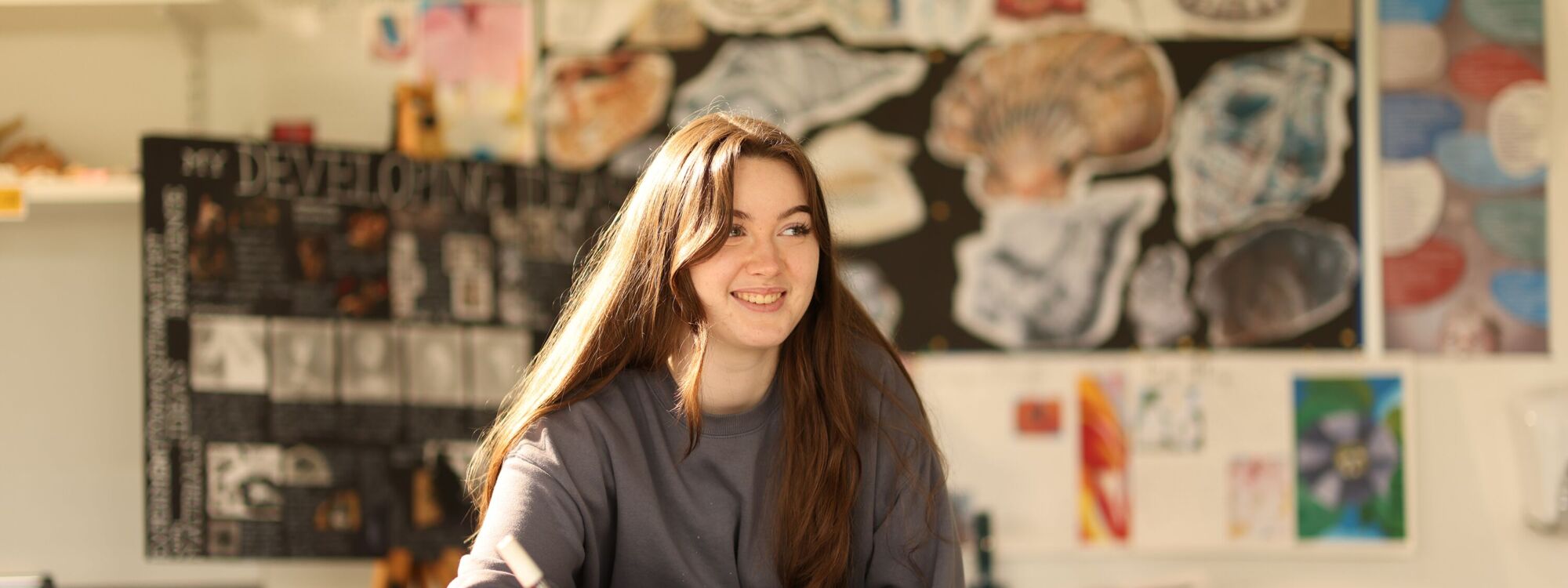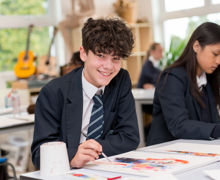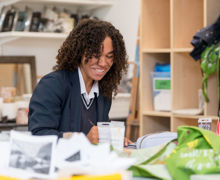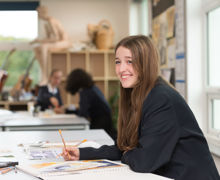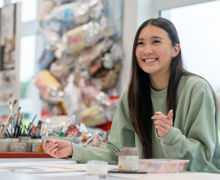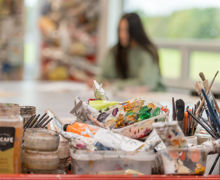- Home
- Academic
- Subject Information
“Art Is not what you see, but what you make others see”
Edgar Degas
The Department views art as both an intellectual and creative subject; it is one of the means by which we interpret, express and understand our place in the world and as such is viewed as an important aspect of education, as well as a having a significant place in the contribution to the UK’s economy and job market. Students develop their creativity, imagination and knowledge, which challenges them to develop their ideas and intentions through personal, individual responses.
Mr Frow – Head of Art
What is it like to study Art at Monk's Walk School?
Students who study art develop their skills in demonstrating their knowledge and understanding of the visual and tactile qualities of a range of materials and show how these can be manipulated and matched to ideas, purposes and audiences through their work.
They learn about codes and conventions in art, craft and design and, during the later years, how these are used to represent ideas, beliefs and values throughout different times. They learn about the roles of artists, craftspeople and designers in different times and cultures, and how these have changed.
How is Art assessed?
Throughout key stage 3, we assess progress against four key areas of what is commonly known as the creative process. This happens throughout each term at key points either for specific tasks or summatively when a task or series of tasks have been completed. The four areas of teaching, learning and assessment can be found below. Student feedback and progress is recorded by on an individual tracking sheet.
At Key stage 4 and 5 a portfolio tracking sheet covering a number of the assessment objectives have been produced to make judgement on the achievement of the body of work. Again, we will be assessing four key objectives of study;
Objective 1 - The exploration of artwork. We assess the quality and depth of analysis and interpretation of the work of artists and artwork through art history. We also assess the use of appropriate, correct literacy alongside a practical exploration of the work being explored
Objective 2 – Creative exploration and refinement. This included the creative response to Objective 1 and Objective 3, where the student have to demonstrate the creative judgements, exploration and creativity through a process of reviewing, modifying and refining work as it progresses
Objective 3 – Recording ideas, observations and insights that are relevant to intension as ideas and work progresses. This is a judgment based upon the careful control of drawing through the various aspects and approaches of drawing, again appropriate to the student’s intension. This can also include the quality of photography and the aesthetic decisions made in forming a composition
Objective 4 – Presenting work as a journey, illustrating the various trials and tribulations in creating a final independent outcome.
Feedback is provided in a variety of ways (see the department feedback policy).
“How you draw is a reflection of how you feel about the world. You're not capturing it, you're interpreting it.”
Juliette Aristides


